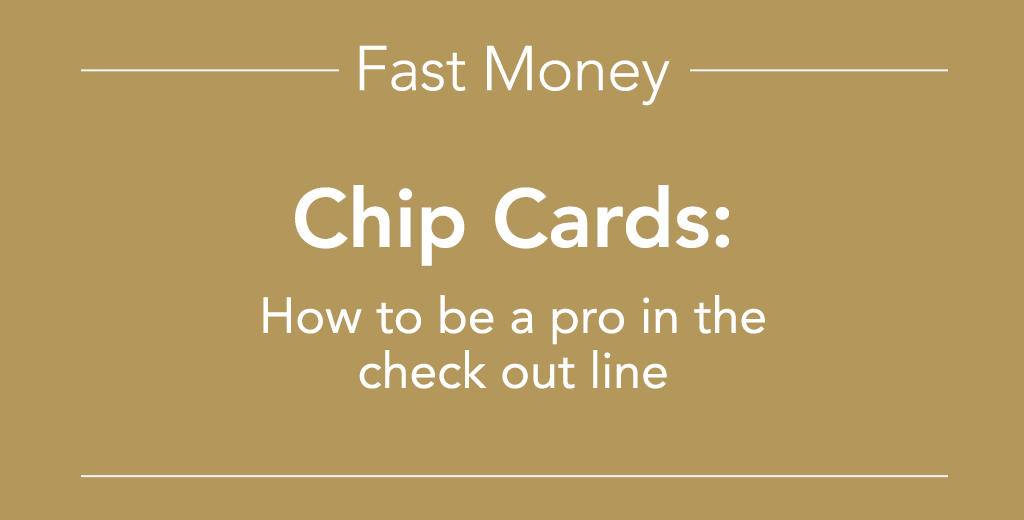Chip cards: How to be a pro in the check out line

Chip cards, also known as EMV cards, are the new standard for credit and debit payments. But why do you need them, and how do you make the check out experience go smoothly?
Here’s what you need to know:
Dip instead of swipe
Chips put an end to swiping. Instead, you dip the card into the front of the machine. It’s a little different, but once you master the dip, you’ll never miss swiping again.
Why are chip cards more secure?
Old cards store information used to process payments on a magnetic strip. Hackers can steal that information and make a copy of your card. The chip creates a new code every time you use them. Even if hackers steal the data, they can’t copy the card.
Can I still use the card if a store doesn’t have a chip reader?
Yes. Most cards still have a magnetic strip. While it’s not as secure, the ability to swipe is still available at merchants that haven’t made the switch.
Do I need a signature and PIN number?
For credit transactions, you will need to sign for your purchases. For debit card transactions, you can sign or use a PIN.
Am I still protected if someone steals my card info?
Visa’s Zero Liability Policy protects you from unauthorized purchases — plus returns any funds deducted due to fraudulent charges.
Will I be able to use my card when traveling outside the country?
Yes. Most European nations and other developed countries have already made the switch to the chip.
Master the dip and say goodbye to the swipe
Chip cards, like the ones you receive with Pinnacle Bank Checking Accounts, offer more protection, and with a little practice, a better experience at check out.